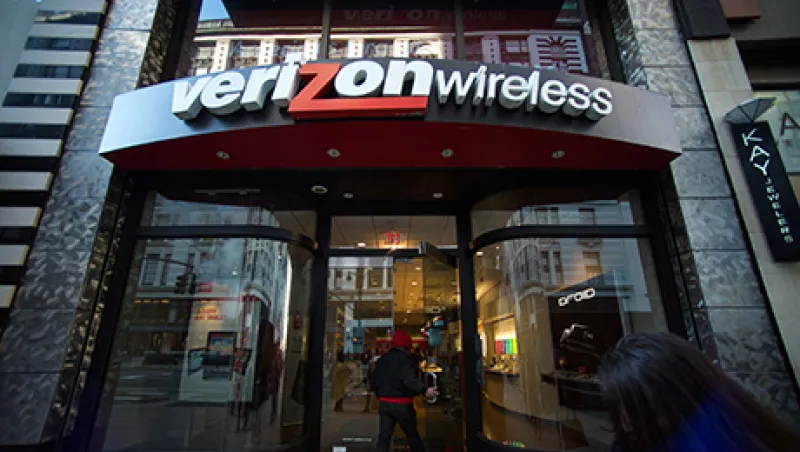Investment-grade U.S. corporate bond issuance has hit a record high, as companies have taken advantage of historically low borrowing rates. Market participants have mixed opinions as to whether the trend will continue. So far this year through June 18, investment-grade companies, including financial institutions, issued $624.2 billion of bonds, an all-time peak for the period and up from $570.4 billion in the same period a year earlier, according to London-headquartered financial data firm Dealogic. Issuance totaled $1.1 trillion for all of 2013, also a record high.
The largest corporate bond sale on record came last September, when Verizon Communications sold $49 billion of debt to help finance its purchase of Vodafone’s stake in Verizon Wireless. Prior to that, Apple had issued a then-record $17 billion of bonds in April 2013 (and an additional $12 billion this April) to finance share buybacks and dividends.
“We are seeing bigger deals get done,” says Andrew Karp, co-head of Americas investment-grade capital markets for Bank of America Merrill Lynch. “Verizon was a watershed event — $49 billion shattered every kind of record. Apple’s $12 billion is a drop in the bucket now. The dynamics around the amount of capital you can raise have changed dramatically.”
The rates at which companies borrow and the spread of those rates over U.S. Treasuries have dropped to near record lows, Karp and others note, giving companies incentive to borrow.
The Barclays U.S. corporate investment-grade bond index yielded 2.98 percent as of June 18. The yield of investment-grade corporate-bonds has slipped below that of Treasuries to its lowest level since 2007, with the spread between them standing at 98 basis points as of June 18.
Companies are using proceeds from the bonds for a variety of purposes. First, they’ve been refinancing debt with near-term maturities. “Locking in long-term financing, with rates being so low, is a much more attractive value proposition,” Karp says.
In addition, companies like Apple have been using the money from their bonds to pay for share buybacks and dividends. Companies are using corporate bonds as an alternative to repatriating cash from overseas, which would cost them up to 35 percent in taxes, says Jody Lurie, a corporate credit analyst at Janney Montgomery Scott in Philadelphia.
Companies have also been using the bond money to pay for mergers and acquisitions. “A lot of firms are more hesitant on capital expenditure plans than buying somebody else, where they see less risk,” says Lurie.
AT&T, which plans to buy DirecTV for $49 billion, issued $2 billion of bonds earlier this month, plus another $2.9 billion in euro-denominated bonds a day later.
Finally, “in some cases, companies are [just] opportunistically adding cash to their balance sheet at lower rates, and they will figure out what to do with it later,” says Rick Tauber, director of corporate bond research for Morningstar in Chicago.
Investor demand for yield in a low-interest-rate environment has helped pave the way for the heavy bond issuance. “There is a lot of money chasing products with any kind of yield,” Tauber says. “That demand component is very important to the dynamics going on here.”
Investors allocated a net $1.1 billion to U.S. investment-grade corporate bond mutual funds and exchange-traded funds in the year-to-date through June 4, according to preliminary data from Lipper.
“You would assume that investors would shy away from interest rate products,” because rates are so low, says Karp. “But in light of the Fed having kept rates low for so long, investors are left with fewer obvious choices on where to go with their capital. The investment-grade corporate sector has been one of the best-performing asset classes this year.”
The Barclays U.S. corporate investment-grade bond index returned 4.97 percent so far this year through June 18. That compares to 6.9 percent for the S&P 500 stock index.
The short end of the yield curve attracts investors dissatisfied with minuscule money market rates, says Karp. “The long end is attracting pension funds looking to increase their allocations to fixed-income relative to equities,” he says.
Lurie points out that Treasury and mortgage bond issuance has fallen. That pushes institutional investors who need to invest in safe long-term bonds, such as life insurance companies, to buy high-grade corporates, she says.
Madison Investment Advisors of Madison, Wisconsin, has recently purchased bonds of MetLife, BNY Mellon, Apple and U.S. Bancorp, says Alan Shepard, a portfolio manager at the firm.
As for future issuance, Tauber expects it to remain heavy “for some time.” He expects Treasury yields to rise eventually, putting an end to the party. Exactly when remains unclear, he says.
But Shepard sees cause for concern. U.S. economic growth may strengthen, pushing interest rates higher. In addition, heavy share buybacks and dividend payouts at the pressure of activist investors and increased M&A activity could push corporate bond yields higher because companies are issuing bonds to finance spending in those areas. The additional debt could put upward pressure on yields, he says. And rising yields could mean trouble for corporate issuance.
Get more on fixed income.







